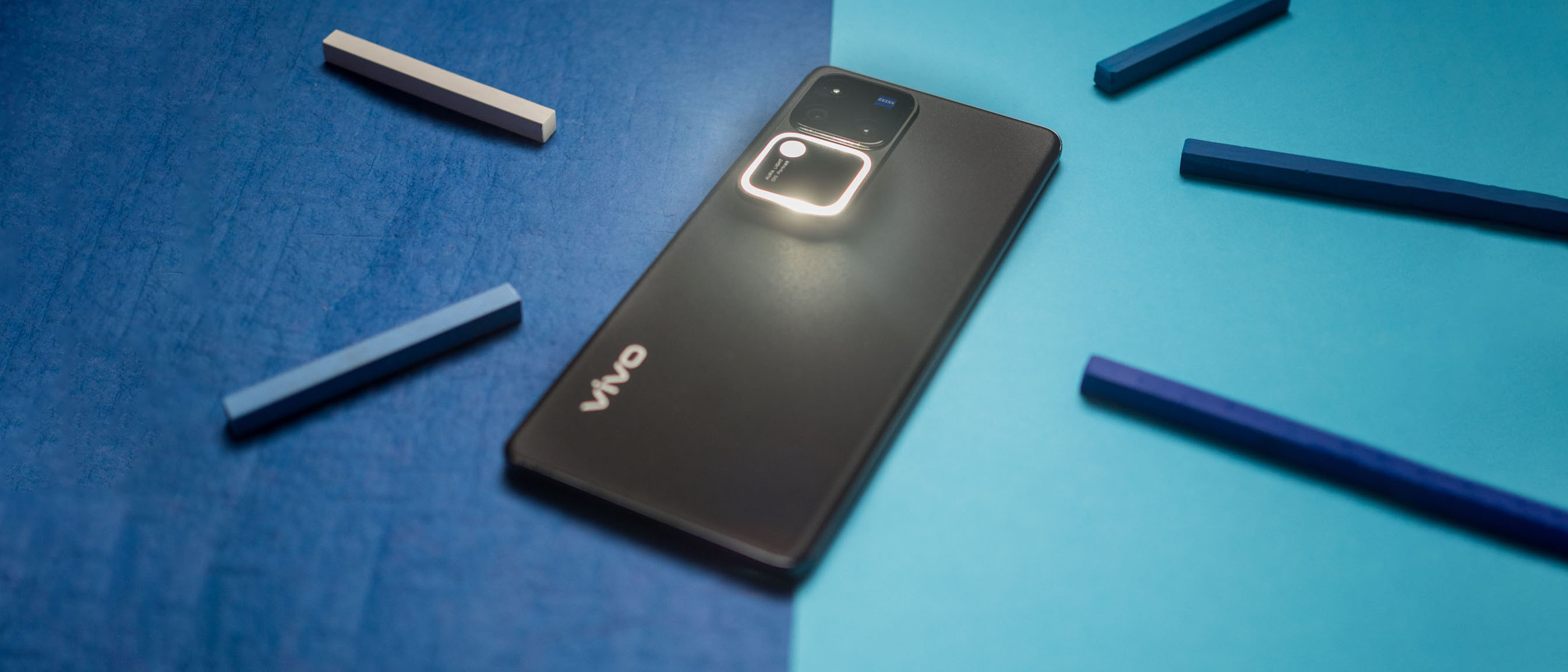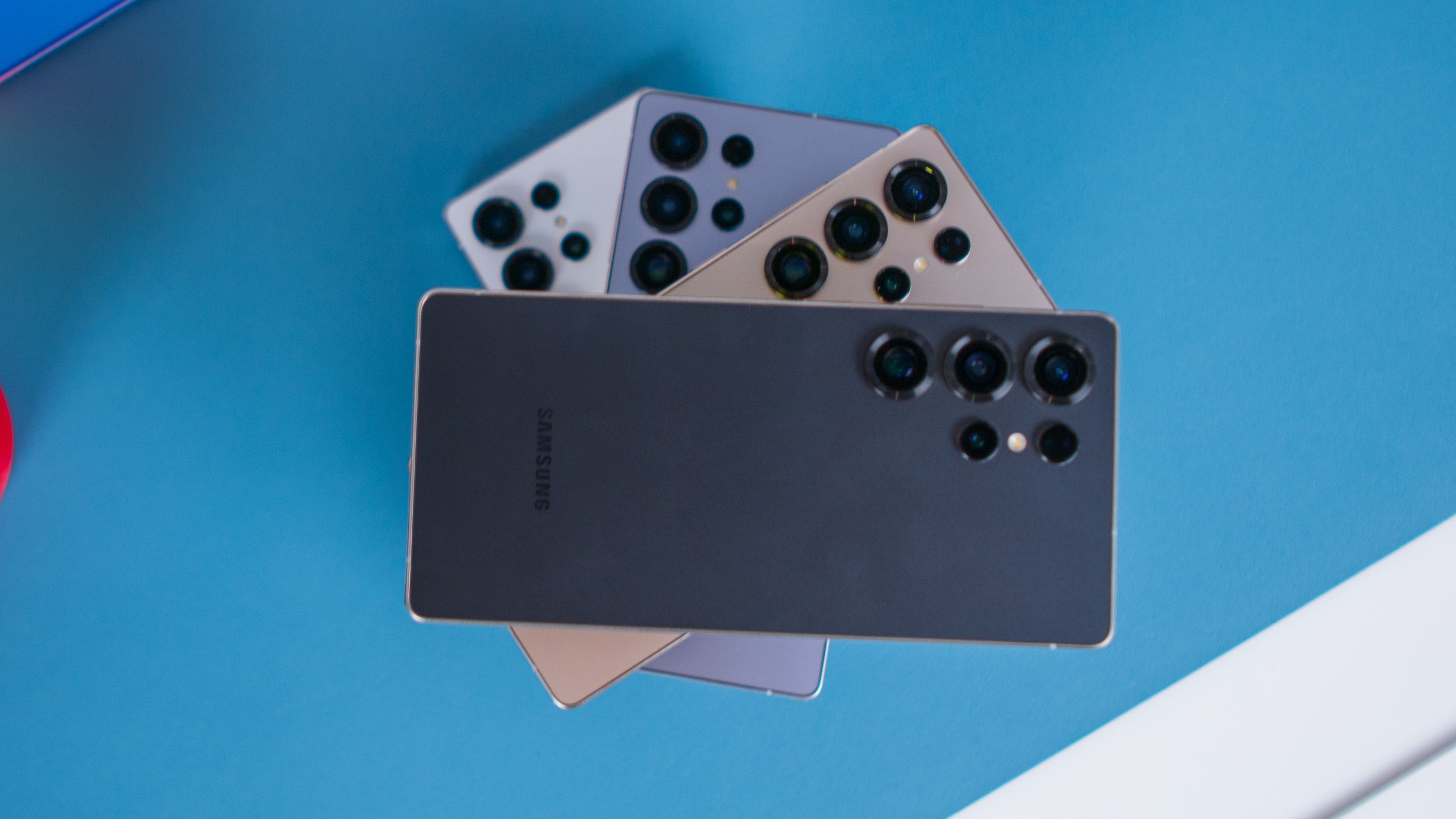Android Central Verdict
The V30 Pro comes with considerable upgrades over its predecessor, including three 50MP cameras at the back that deliver one of the best packages in this category. Vivo managed to create one of its best designs yet, and the phone is noticeably thinner and lighter than its rivals. You still get a large battery with 80W charging, decent software, and Zeiss integration, unlocking a new set of shooting modes and effects. Yes, the phone is costlier than last year, but the upgrades make it a standout choice if you need a camera-focused mid-ranger.
Pros
- +
Ultra-thin design is exquisite
- +
Terrific cameras with good auxiliary sensors
- +
Amazing selfie camera
- +
Software is much better than previous iterations
- +
Long-lasting battery with 80W charging
Cons
- -
Older hardware
- -
No wireless charging
- -
Won't get as many software updates
- -
Costlier than predecessor
Why you can trust Android Central
Vivo's V series has always been about delivering svelte designs and good cameras in the mid-range segment, and the Chinese manufacturer is taking things to a whole new level in 2024. The brand's Zeiss integration is being extended to cover the V series with the introduction of the V30 and V30 Pro, and that makes things very interesting.
Obviously, Vivo isn't the only brand to do this; Xiaomi also did the same thing last year with the Xiaomi 13T series, bringing Leica-tuned imaging modules to its mid-range portfolio. Where Vivo has an edge is with the design; the V30 Pro looks stunning, and it is the thinnest and sleekest phone I used this year.
But it's the cameras that truly stand out. The phone has a trio of 50MP cameras at the back, and they're a significant upgrade over last year. You get a 50MP camera at the front as well, and it does a brilliant job with selfies.
Vivo also has a new design at the back that looks rather striking, and the brand somehow managed to slot in a 5000mAh battery into a device that's just 7.45mm thick. I used the Vivo V30 Pro for the better part of a week, and here's why I think the phone is a great choice if you're looking to switch to a new mid-range device in 2024.
Vivo V30 Pro: Pricing and release date

Vivo unveiled the V30 Pro on February 28, and the phone will go on sale in the coming weeks in select regions — India, Indonesia, Thailand, Malaysia, Philippines, and Taiwan. The phone is launching in Indonesia and Thailand initially, and is slated to debut alongside the standard V30 in India on March 7.
The V30 Pro is set to retail at IDR 7,999K ($510) in Indonesia, and THB 19,999 ($555) in Thailand. Vivo is releasing two configurations of the V30 Pro in global markets: a base model with 8GB of RAM and 256GB of storage, and a 12GB/512GB version.
Vivo V30 Pro: Design
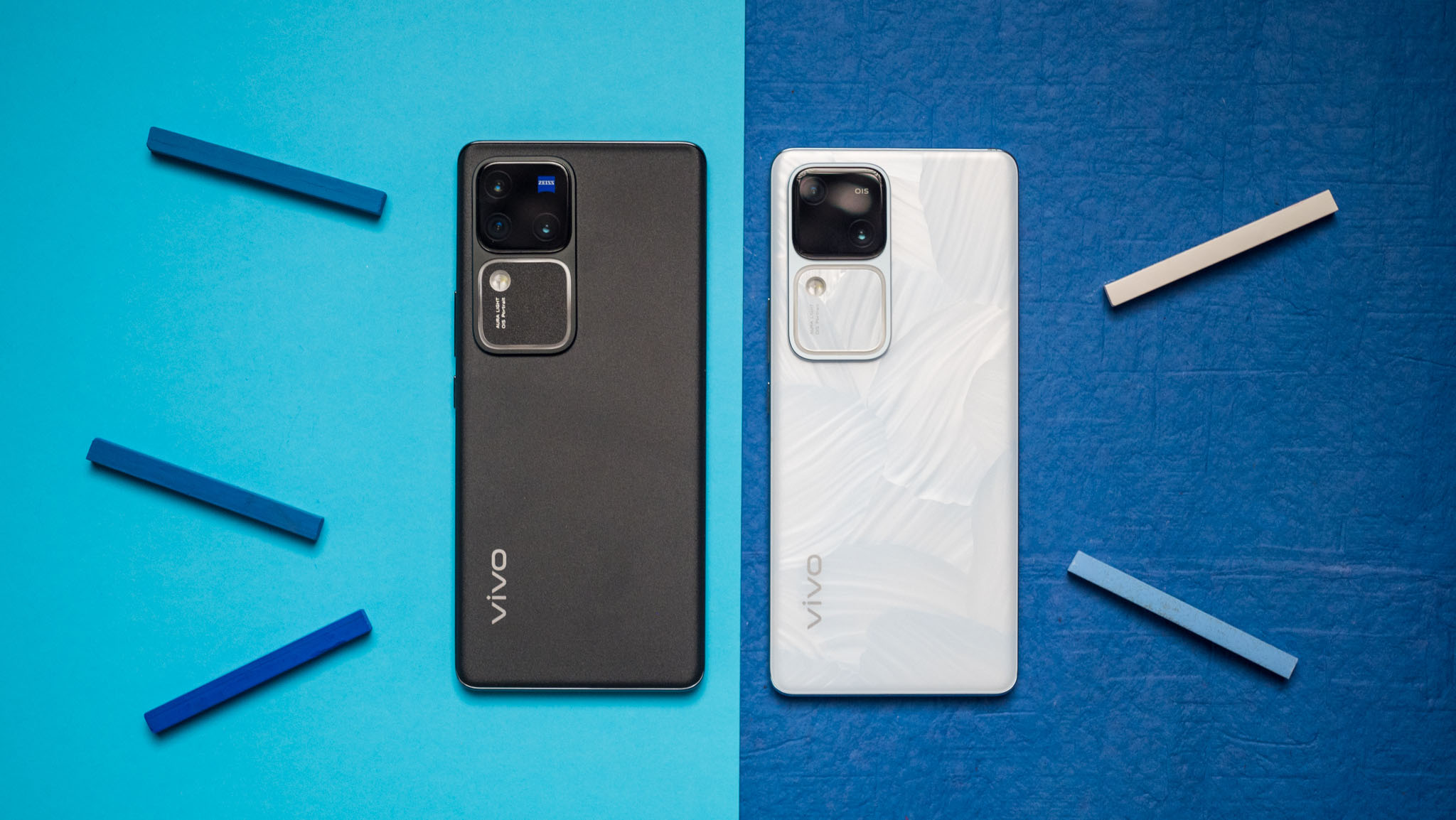
Vivo knows a thing or two about stylish designs, and the V30 Pro may just be one of its best offerings yet. The phone has an unbelievably svelte profile, and switching from the Honor Magic 6 Pro, I immediately noticed the difference. The phone has similar dimensions as the V29 series, but the overall design looks much cleaner thanks to the changes at the back.
Get the latest news from Android Central, your trusted companion in the world of Android
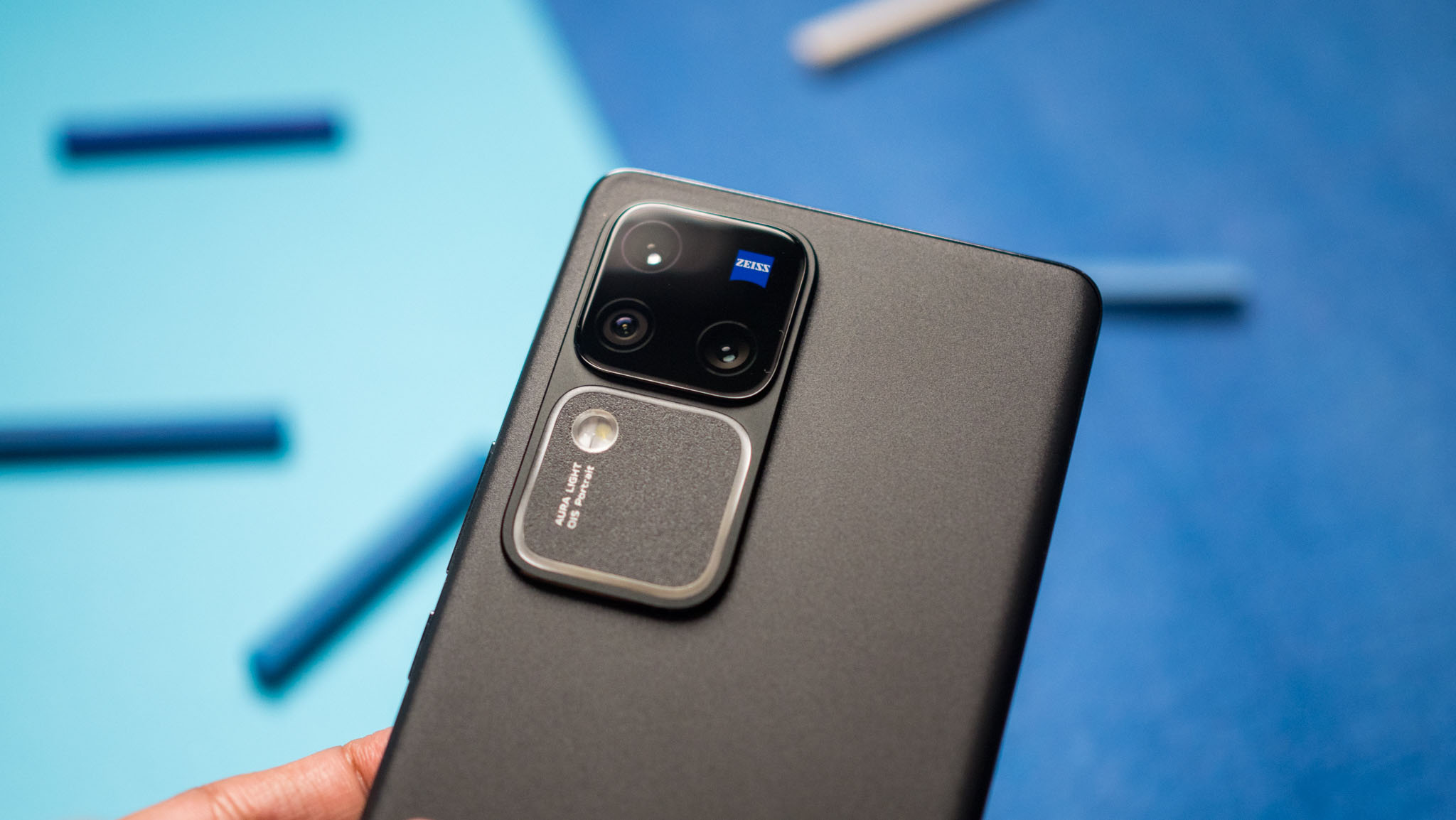
The V30 Pro uses a new camera housing that looks much more elegant, with Vivo switching out the blocky rectangular design with a polished housing that looks great. The key differentiator for these devices is that the camera housing doesn't jut out from the chassis, so there's no wobble when using the V30 Pro on a desk.
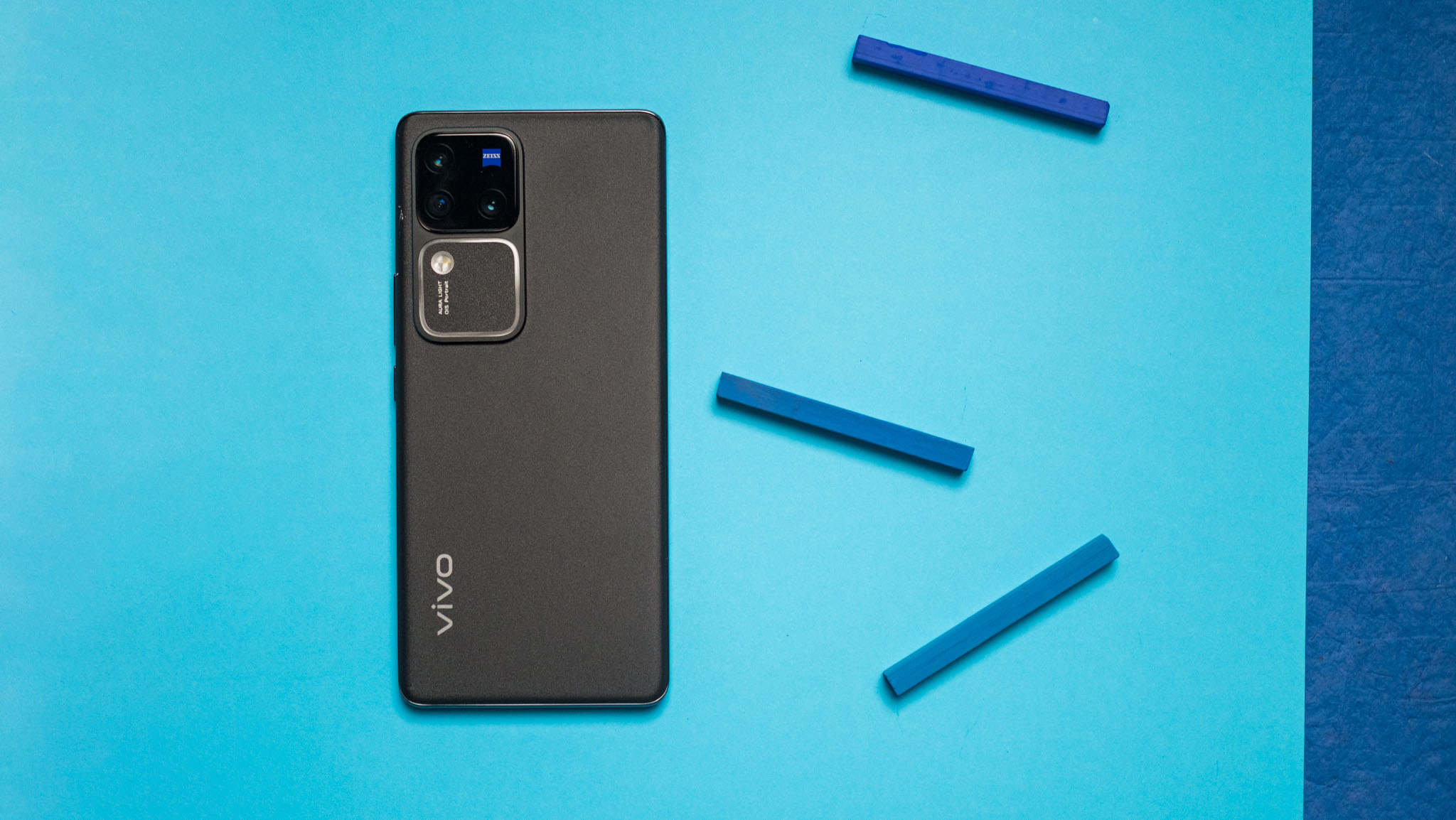
The camera island has smaller rings around each module, and I find this ironic because last year's design had arguably mediocre auxiliary cameras that were slotted into giant rings. This time around, the V30 Pro features a trio of 50MP cameras at the back, but they're housed in diminutive rings.

There's a reason for this, and it has to do with the Aura Light; the feature is basically an auxiliary flash module that's designed to produce a light that's brighter and softer than the regular LED flash sensor, and it does a great job in low-light situations. I'll cover Aura Light in detail in the camera section, but the additional of the module means the actual camera housing is smaller.
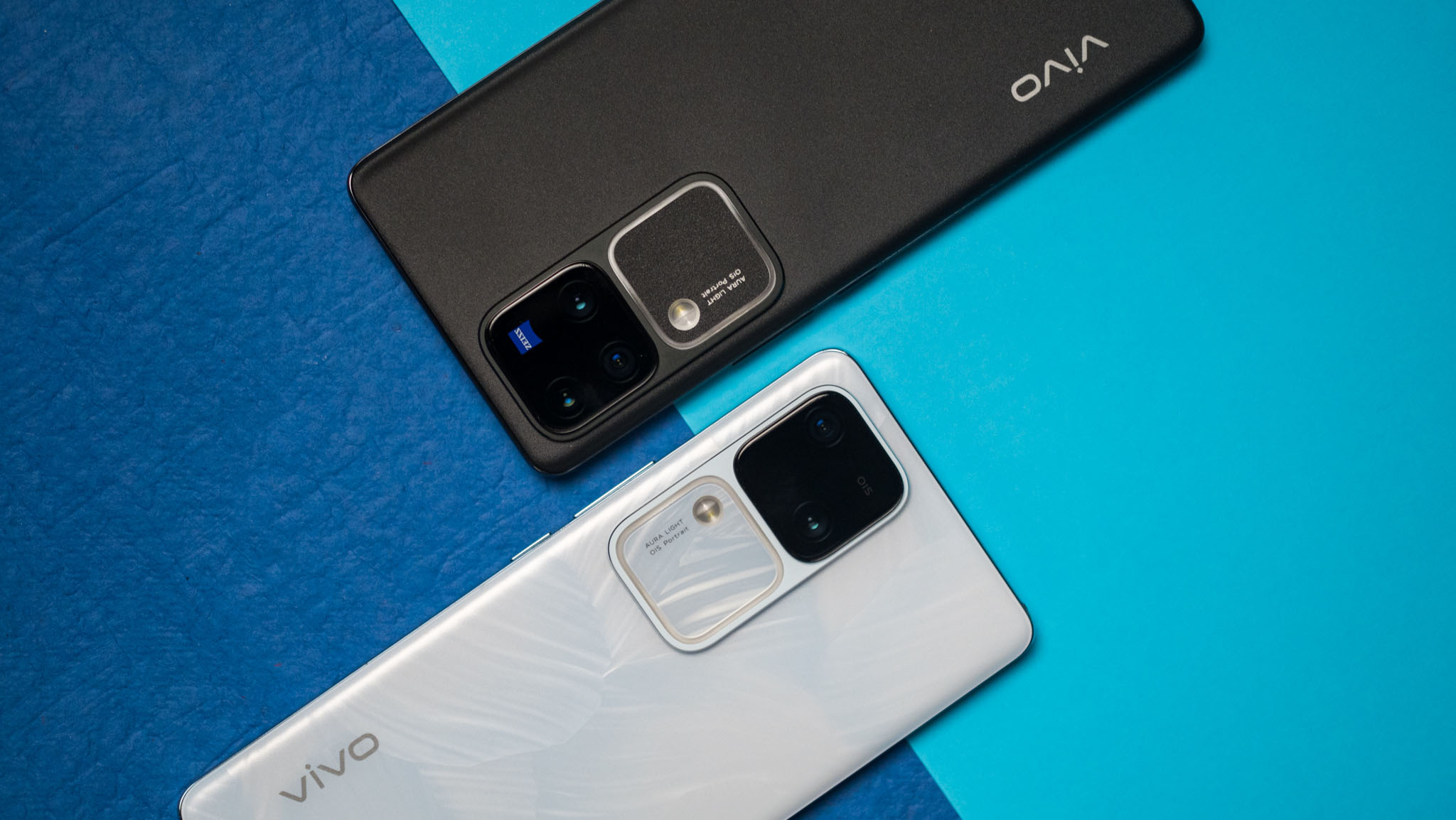
The design also has a lot going for it, particularly the Bloom White version that mimics the "delicate gradient color scheme of flower petals with a serene white base, seamlessly transitioning into a subtle blue gradient." The gradient effect is subtle, and it looks very cool. You also get a subtle shimmer pattern at the back, the matte texture is a delight to use, and it is striking to behold — it looks much better than its product shots suggest.
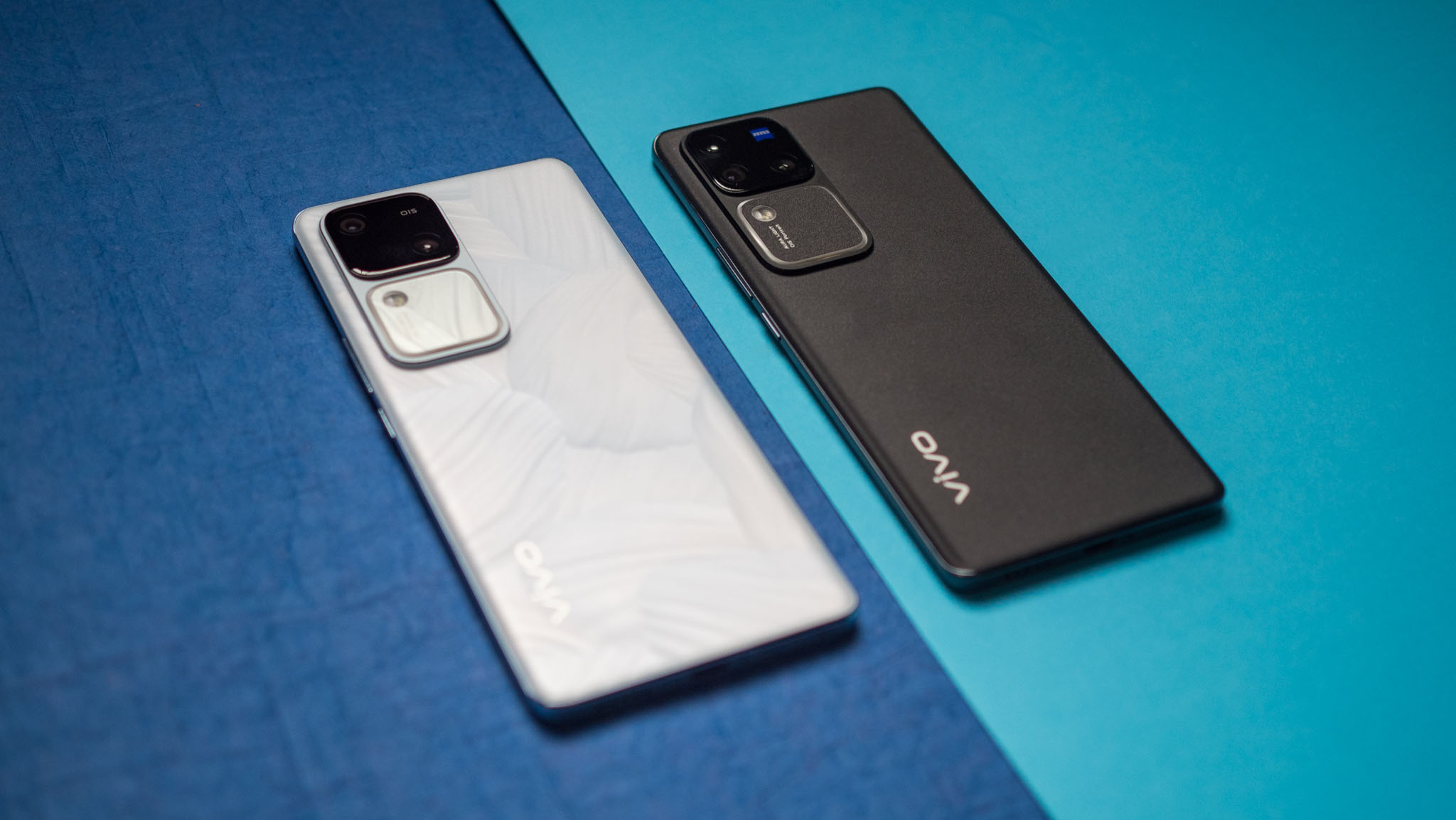
Anyway, I got the V30 in Bloom White and the V30 Pro in Noble Black, and the black version is as plain as designs get in 2024. It has a shimmering glow as well, and the frosted glass design means you don't get much smudging. The phone has flowing curves at the front and back, and this allows you to hold the device comfortably.
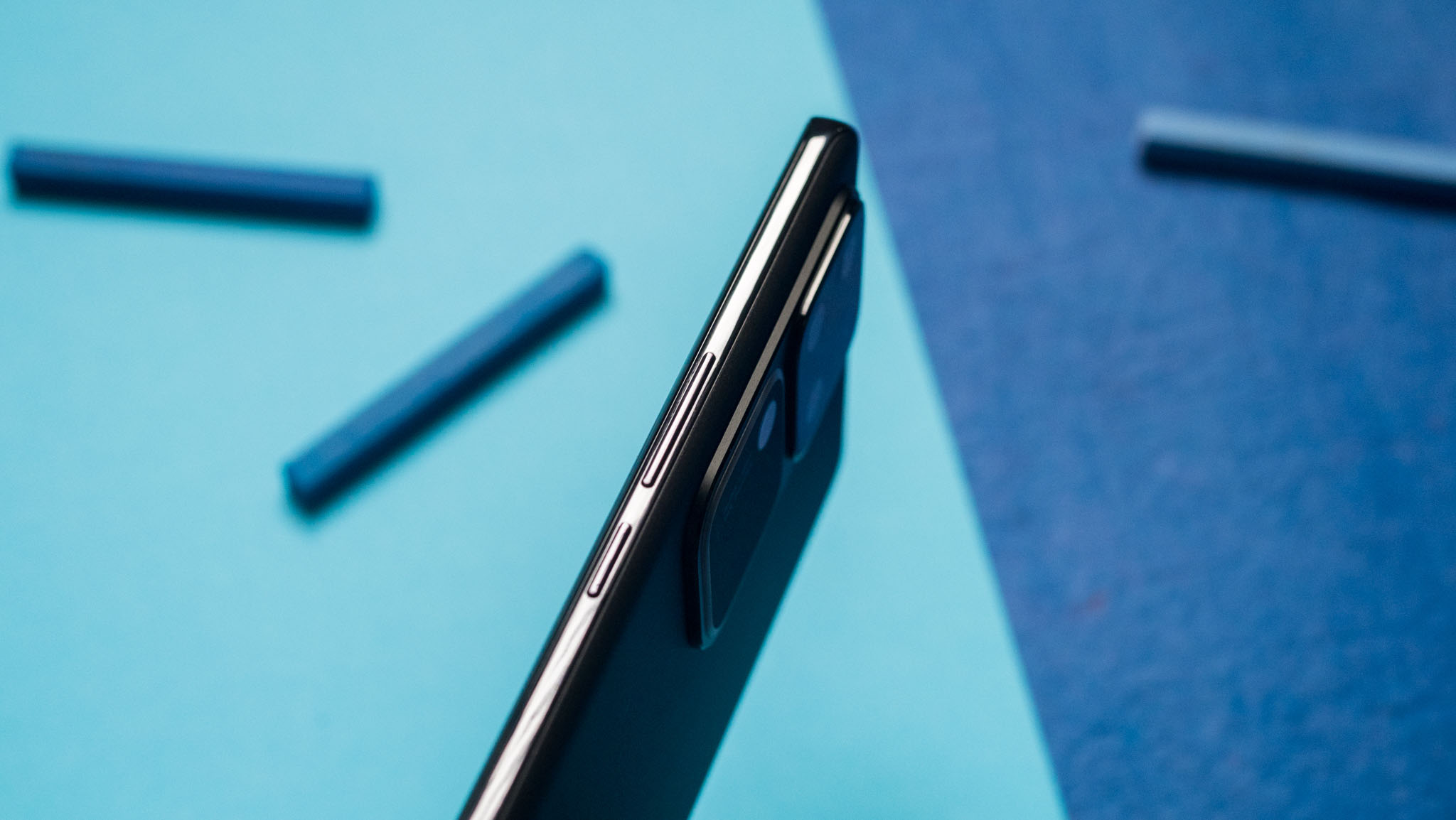
That said, there isn't much to hold on to at the sides, and I'd suggest getting a clear case to use with the device (there's one bundled in the box). The power and volume buttons are on the right, the SIM card tray is at the bottom, and you get the same metal plate up top as the X100 Pro, but it says Professional Portrait this time.

There's also IP54 ingress protection, and while it isn't as good as the IP68 rating that most devices in this segment offer, it is better than nothing — which was the case until last year. The only design quibble is that the phone is a bit tall, but other than that, Vivo nailed the overall aesthetic.
Vivo V30 Pro: Display

The V30 Pro has a 6.78-inch AMOLED panel with 120Hz refresh, and it ticks all the right boxes: it has good color saturation and vibrancy, gets incredibly bright in outdoor use, and has HDR10+. The panel goes up to 2800 nits in HDR content, and up to 1200 nits in outdoor use.
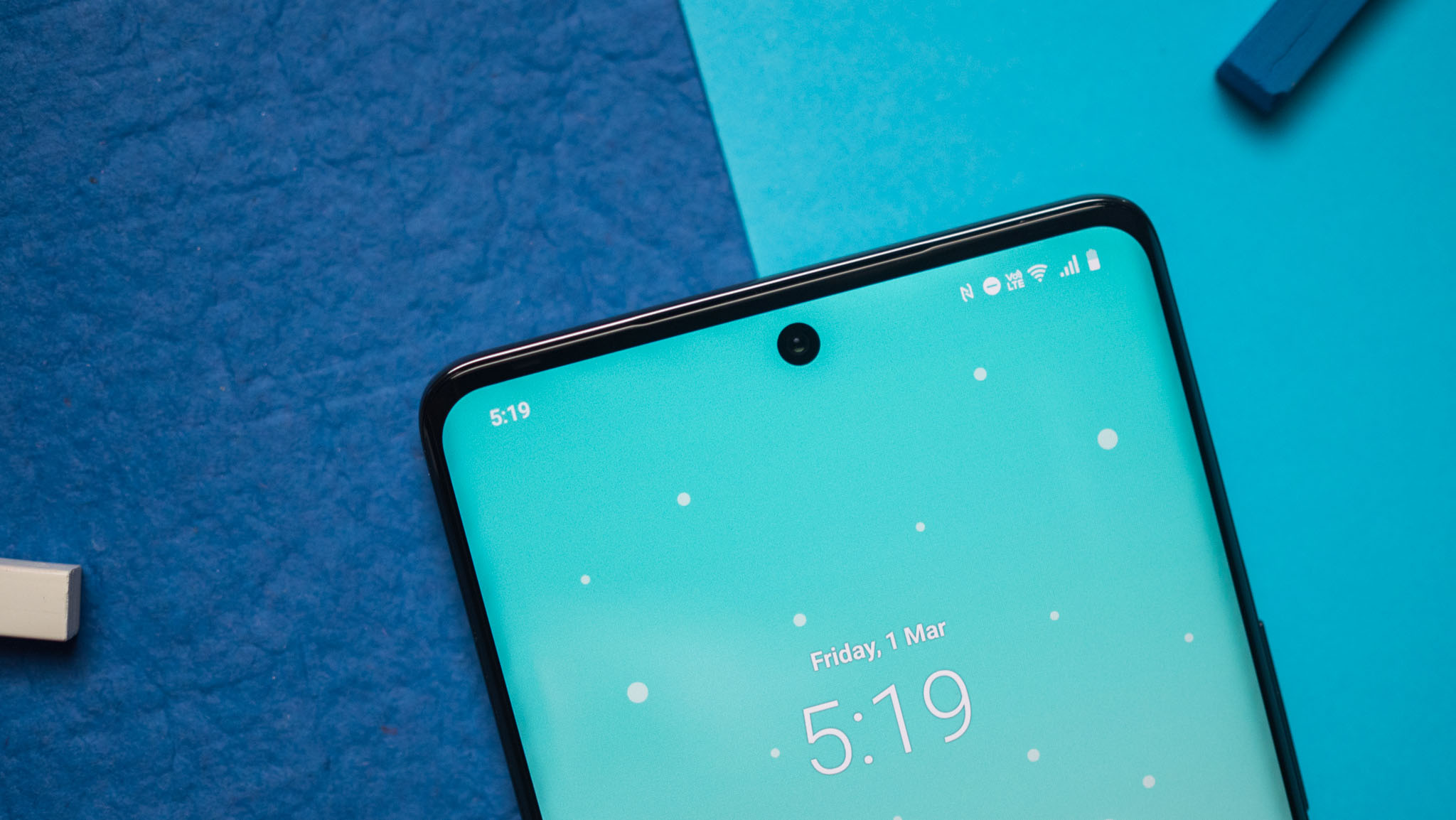
The panel has good customizability, and Vivo's always-on mode has plenty of unique styles. I didn't see any issues in daily use, and the screen is great for streaming content and playing games. The screen refresh is set to Smart Switch out of the box, but you can manually toggle between 60Hz and 120Hz from the settings.

Although the device is on the wider side, the svelte design means it isn't uncomfortable in the least in daily use, and having tested the Nubia Z60 Ultra recently, I can't think of two devices that have such a contrasting design. I also like the curved panel, and it allows the device to stand out in this segment. There is stereo sound here, but it doesn't get particularly loud or detailed.
Vivo V30 Pro: Performance and battery

While Vivo changed a lot of things this year, the V30 Pro uses the same Dimensity 8200 platform as last year's V29 Pro and V27 Pro. It is built on a 4nm node and is decent in daily use, but it has older Cortex A78 and A55 cores, and they just don't measure up in 2024. Most phones in this category use Arm v9 cores as standard — the Cortex A710 and A510 — and the efficiency gains with the 4nm node are offset by the use of older cores.
While the device isn't slow as such, it doesn't quite deliver the same level of performance as its rivals, particularly when it comes to gaming. Vivo doesn't position this as a gaming phone, and I understand the brand's reasoning to use a stable platform with proven reliability, but this is a problem of its own making. Vivo's insistence to launch a new device in the V series every six months, and there's only so much that can actually change between generations.
| Category | Vivo V30 | Vivo V30 Pro | OnePlus 12R |
|---|---|---|---|
| PCMark Work 3.0 (Overall) | 10560 | 10789 | 12189 |
| PCMark Work 3.0 (Web Browsing) | 7950 | 8503 | 12111 |
| PCMark Work 3.0 (Video Editing) | 5866 | 5162 | 5548 |
| PCMark Work 3.0 (Writing) | 12225 | 15764 | 15752 |
| PCMark Work 3.0 (Photo Editing) | 23065 | 24586 | 19074 |
| Geekbench 6 (single-core) | 1099 | 1259 | 1332 |
| Geekbench 6 (multi-core) | 3144 | 3832 | 4475 |
| 3DMark Wild Life Extreme (score) | 1491 | 1818 | 3686 |
| 3DMark Wild Life Extreme (FPS) | 8.935 | 10.865 | 22.07 |
This is evident when it comes to gaming, with the V30 Pro not going managing to hold its own against powerful devices — the only device that's slower is the standard V30. You can still get playable framerates in demanding titles provided you turn down the settings, but there is visible jitter. I wasn't able to run the Solar Bay test as 3DMark highlighted a Vulkan error, but in real-world usage scenarios, there are no issues launching games.
If you play casual games and don't care about getting the best framerates in demanding titles, the V30 Pro could be a decent choice. It has good thermal management, and my unit didn't cross 44 degrees even after extended use. At that point, it got noticeably warm, but not too uncomfortable.
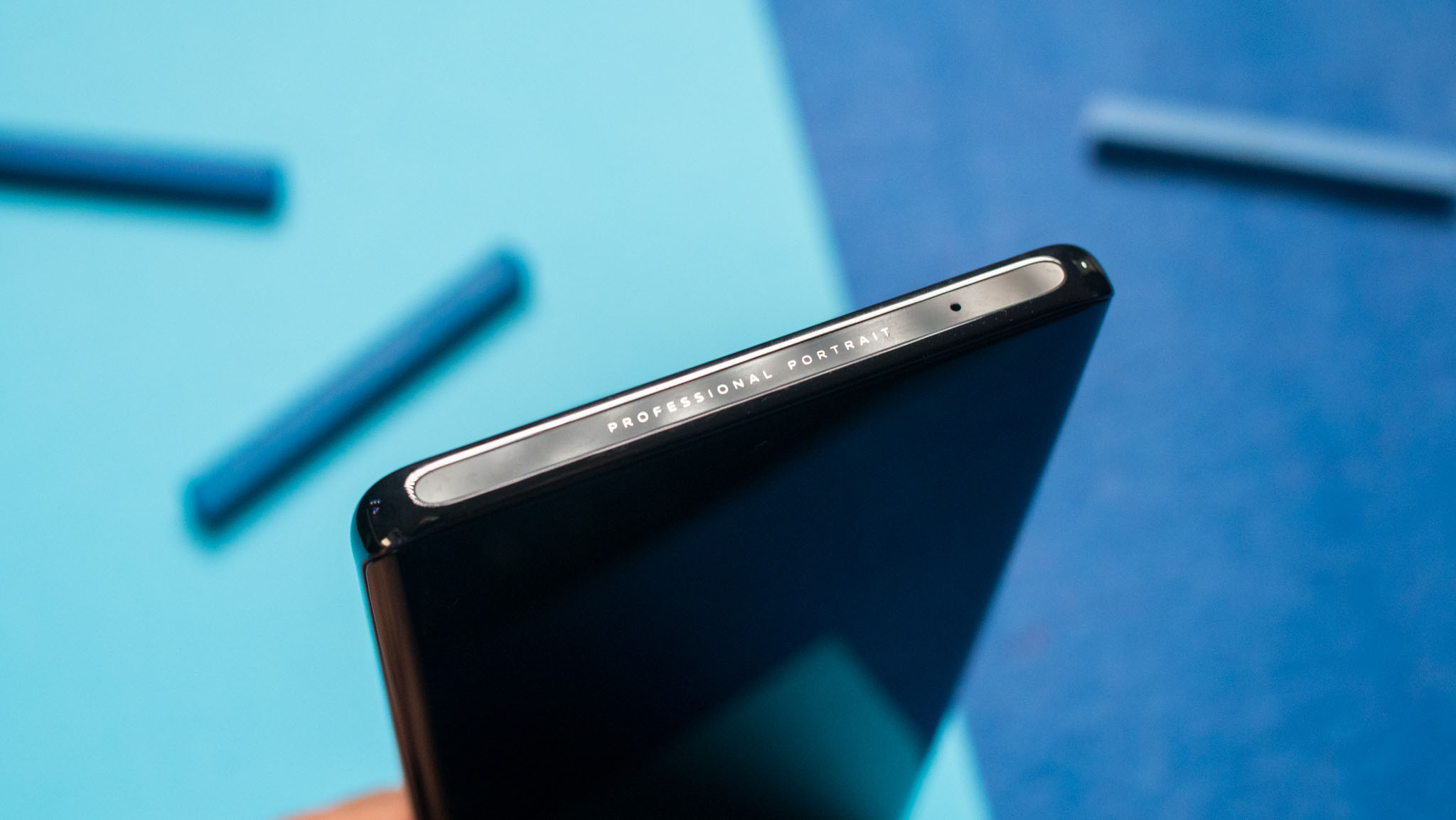
The phone doesn't quite have the latest connectivity; you get Wi-Fi 6 and Bluetooth 5.3, but there are decent Sub-6 5G bands, and you get the AptX HD codec. While Android manufacturers are doing a good job switching to the USB 3.1 standard on their high-end phones, the V30 Pro's USB-C port is still based on USB 2.0, and it is limited in its usability outside of charging the device.
When it comes to battery, the V30 Pro does an outstanding job. The 5000mAh battery manages to last a day comfortably, and I didn't see any issues with the device in this regard even with heavy use. And when you need to charge it, the phone takes a smidgen over 45 minutes to charge the battery via the bundled 80W charger.
Vivo V30 Pro: Cameras
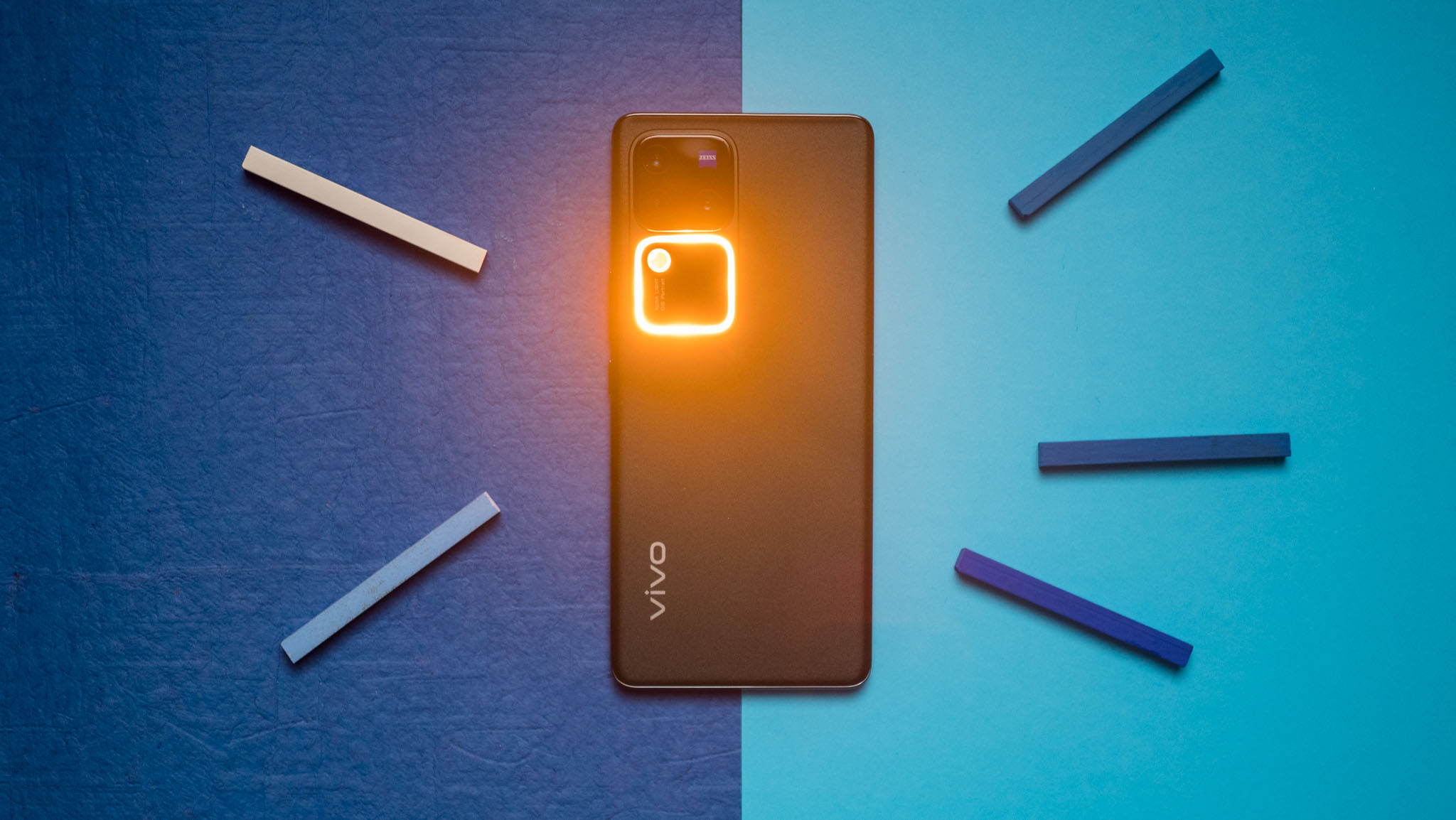
The biggest issue with even the best mid-range phones is the lack of good auxiliary sensors; most phones in this segment have a good main camera, but brands often throw in an average wide-angle lens and an unusable macro or portrait lens just to round out the marketing materials.
That isn't the case with the V30 Pro; Vivo is delivering a strong camera package with the device, and that includes a trio of 50MP cameras at the back. The main 50MP camera uses a Sony IMX920 module and has OIS, the 50MP wide-angle uses Samsung's ISOCELL JN1 and has autofocus, and the 50MP has a Sony IMX816 and goes up to 2x optical zoom. The same 50MP ISOCELL JN1 is being used at the front, and the V30 Pro takes the best selfies in this category.
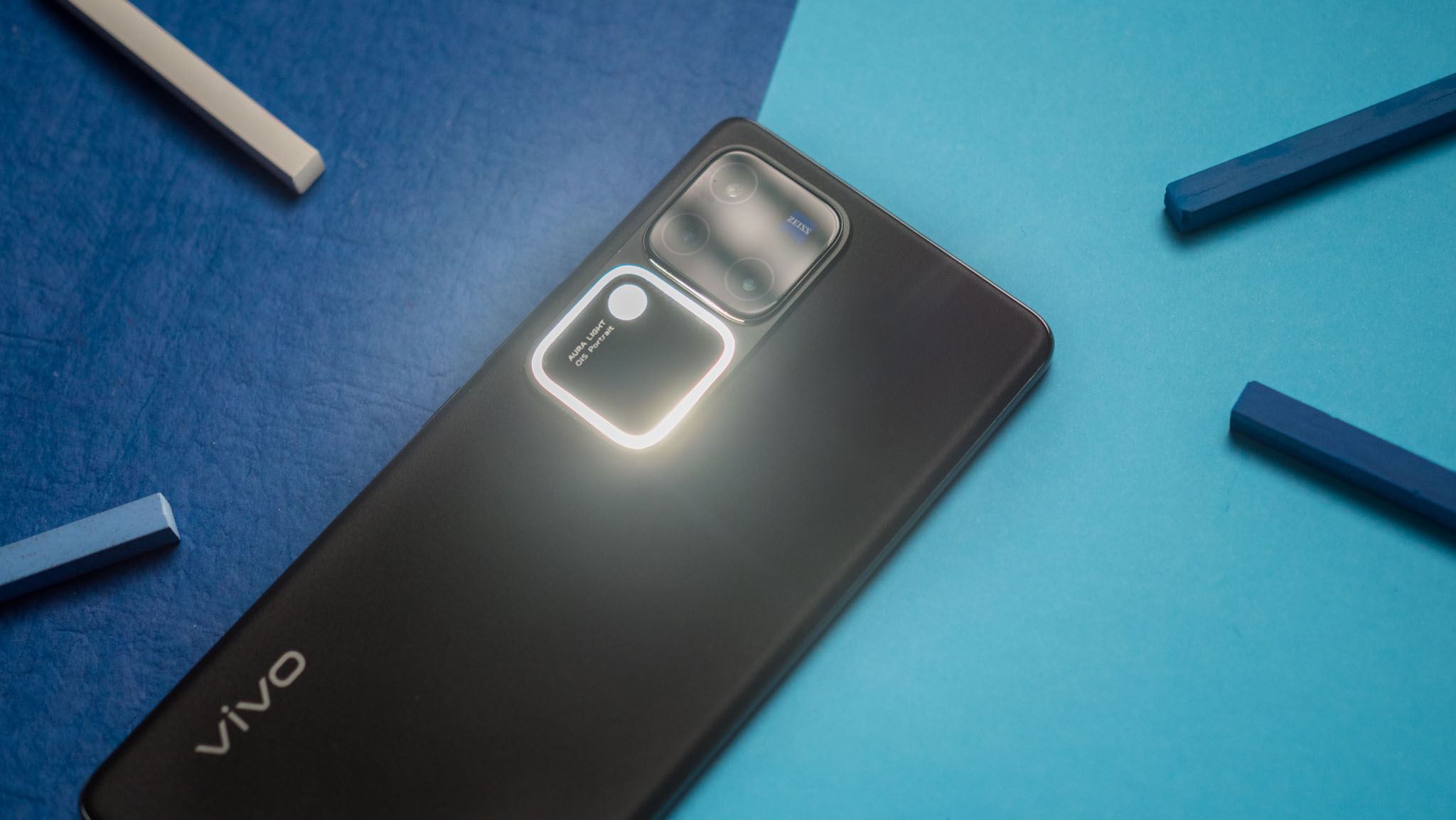
A key feature this year is Aura Light; this is essentially a ring LED light that augments the main flash module, and it is designed to deliver even lighting while retaining a good texture — think of it as a miniature ring light that's attached to the back of the device. What I like about the feature is that you can switch between cool and warm hues, and you can set it to kick in when ambient lighting goes under a threshold or have it always enabled.
The V30 Pro marks the introduction of Zeiss lenses to the V series, and the camera UI gets a toggle that lets you switch between the three available modes: Vivid, Textured, and Zeiss Natural. The Vivid mode is selected out of the box, and it produces vibrant colors that look great. As the name suggests, the Zeiss Natural mode delivers accurate colors.
The camera interface itself is unchanged, and you get the shooting modes, lens selection, macro toggle, Google Lens, flash settings, and beauty effects on the viewfinder.



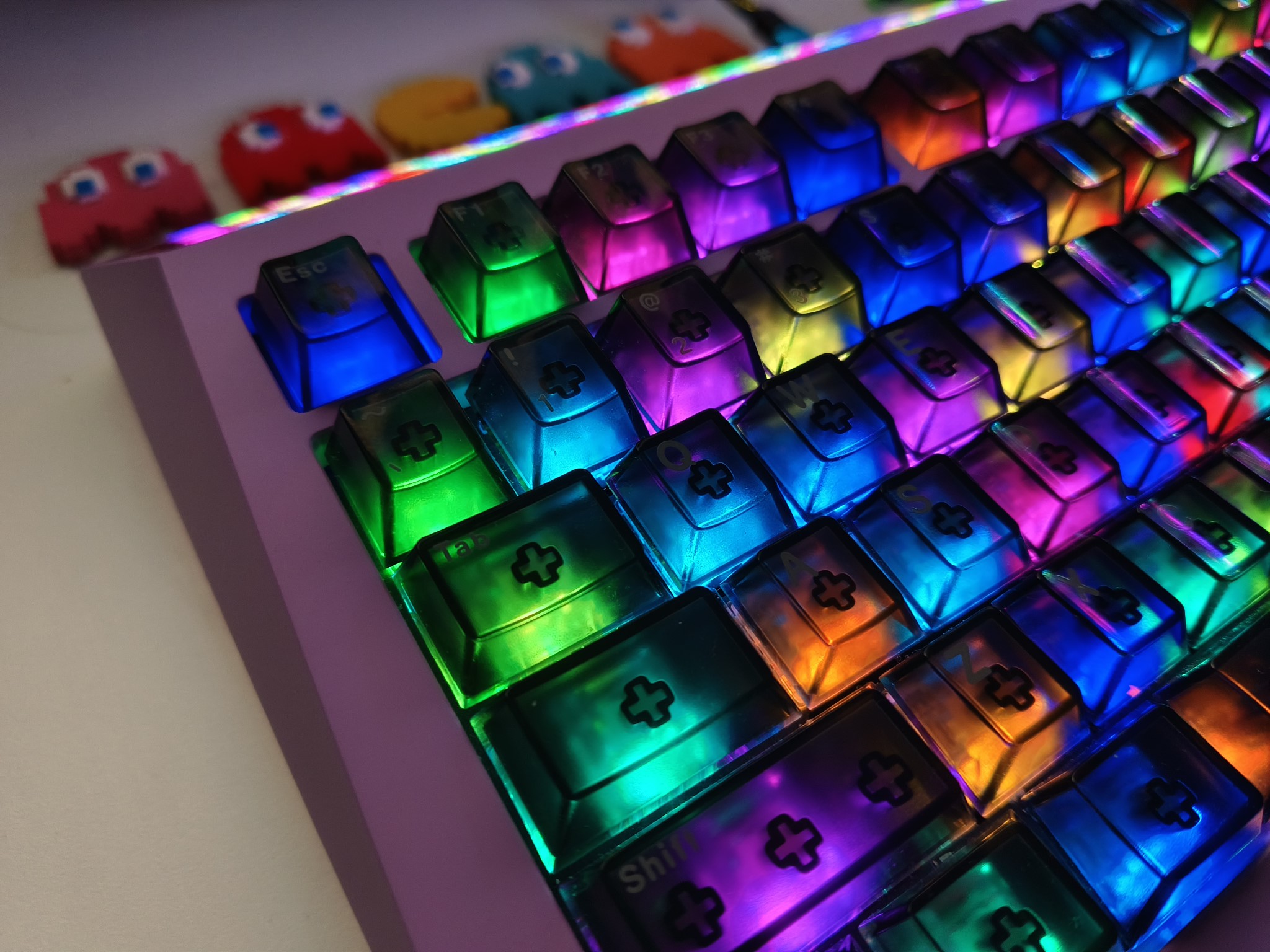
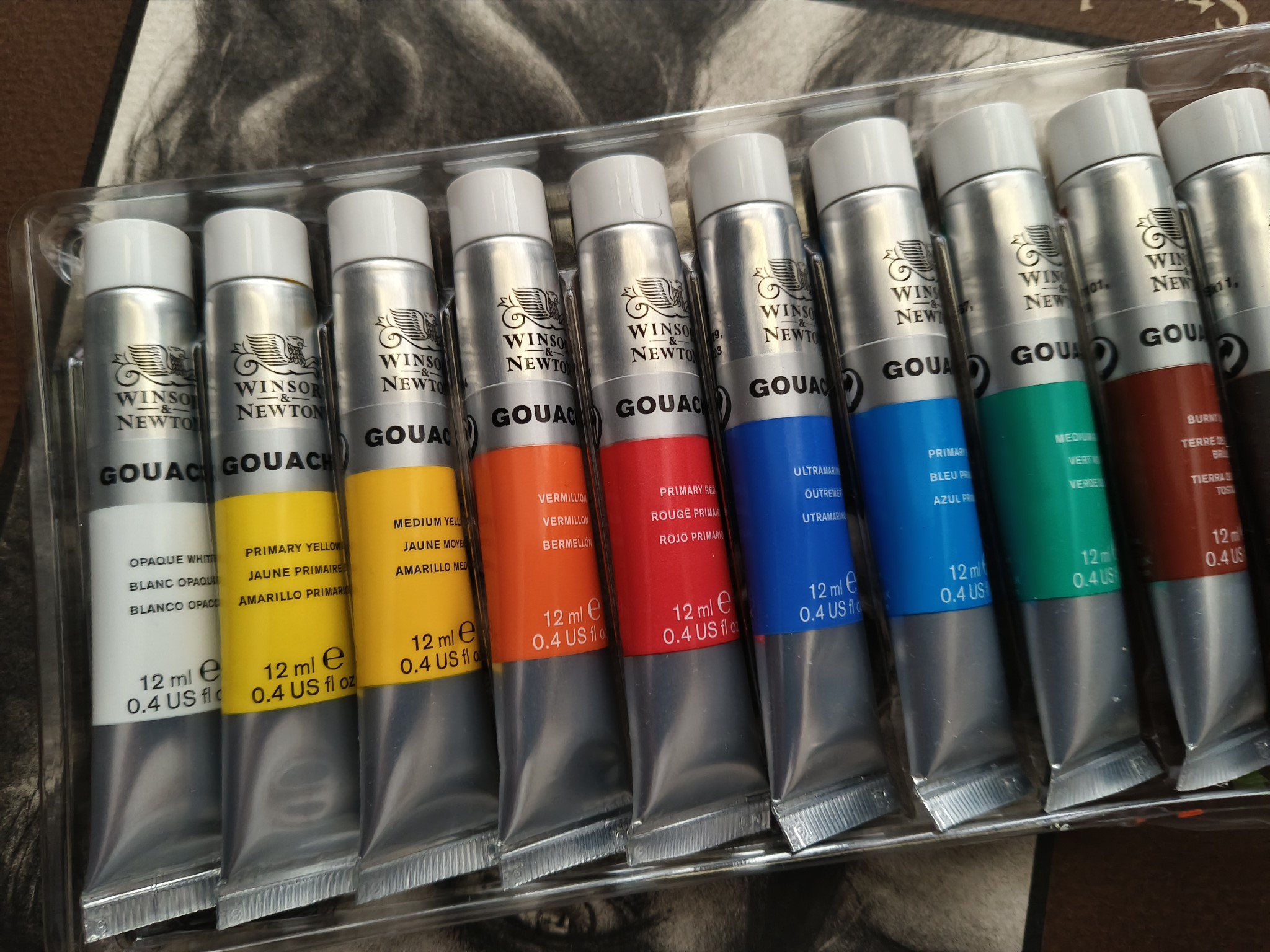



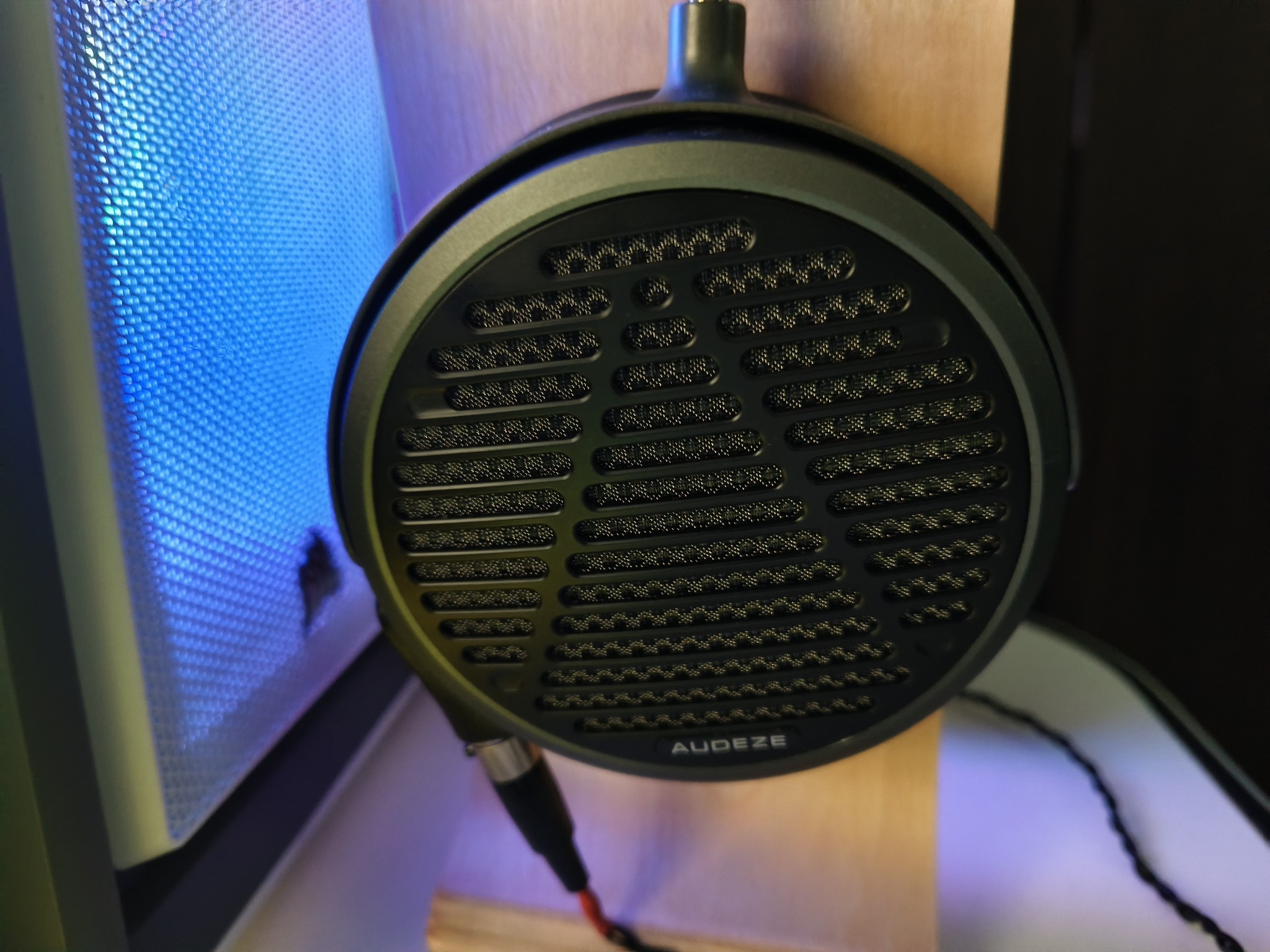
The V30 Pro takes great photos in daylight conditions, with good dynamic range and color rendition overall. Vivo continues to be a bit on the aggressive side when it comes to smoothening details of foliage, but other than that, there are no issues in this area. The wide-angle lens does a great job in daylight scenarios as well, producing photos with great colors and good detail retrieval.
The 50MP zoom lens only goes up to 2x optical zoom, but its biggest strength is as a portrait shooter. In fact, this is where the V30 Pro truly comes into its own; the phone lets you choose between six Zeiss bokeh styles, and it takes some of the best portraits of any device at 2x. This is what I like the most about the Xiaomi 13 Ultra and Vivo X100 Pro, and to see a similar caliber of shots out of a mid-ranger is a big deal.
Switching to low-light, the V30 Pro manages to take stellar shots even with little to no ambient light, and again, this is considerably better than what the V29 Pro was able to achieve last year. The wide-angle lens struggles a bit in this area, but you still get usable shots, and portrait shots at 2x look great at night as well.
Overall, the V30 Pro has one of the best camera packages of any mid-range phone, and the versatile lenses give the phone a distinct edge.
Vivo V30 Pro: Software
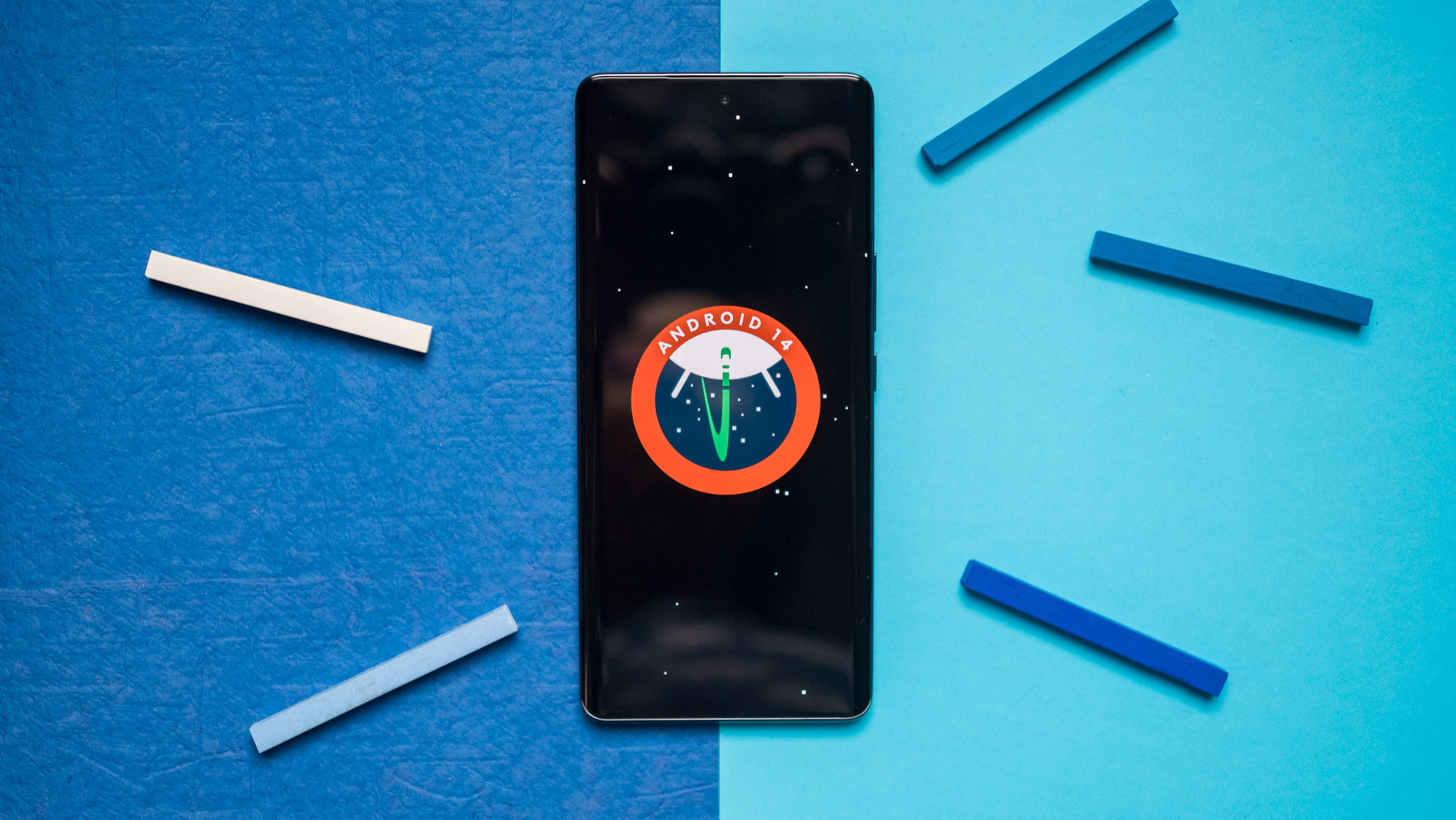
The V30 Pro runs Funtouch OS 14 based on Android 14 out of the box, and the software is clean and is guaranteed to be fluid for at least four years. Vivo says it constantly optimizes the software to ensure it doesn't slow down, and considering the caliber of the hardware available, it will be interesting to see if those claims are actually valid.
Anyway, I like what Vivo did with Funtouch OS 14, and just like the X100 Pro, you get plenty of customizability. There are a few Material You design influences, but for the most part, Vivo has its own styling, and a lot of it is similar to OxygenOS — not astonishing given both use ColorOS as a foundation.

At least Vivo has a lot of custom features of its own that you don't get within ColorOS, and overall, it is good to use; the UI looks polished, and it is optimized.
The biggest issue with the software is that the V30 Pro will get just two Android OS updates along with three years of security updates, and that just isn't enough. While earlier models in the V series also had the same guarantee, the V30 series is significantly costlier, and with all of Vivo's rivals offering at least three platform updates as standard, the brand needs to rethink its strategy.
Vivo V30 Pro: The competition
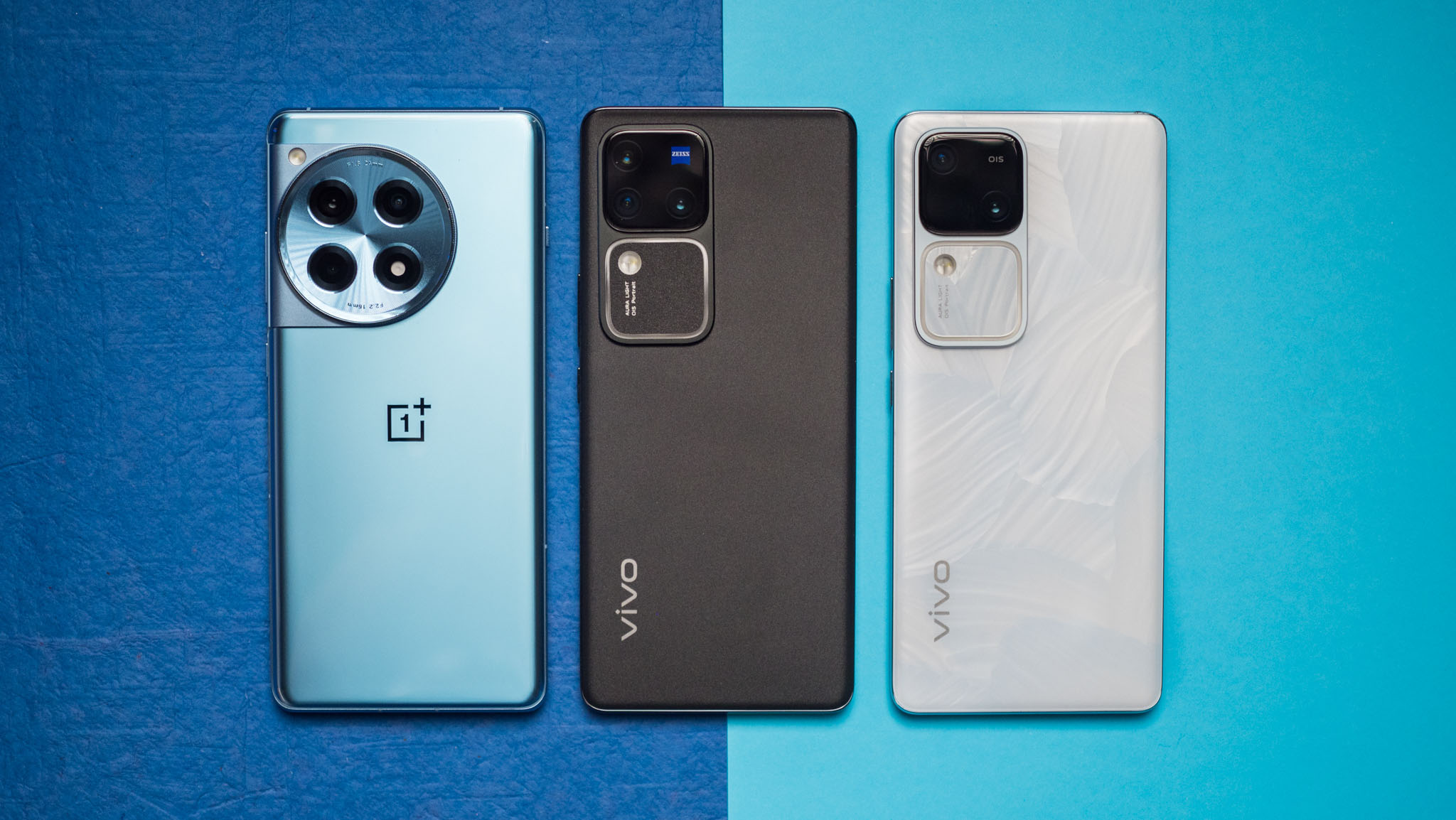
The OnePlus 12R is the obvious alternative to the V30 Pro, with both devices costing roughly the same. The 12R has much better hardware, and you get a brighter screen, larger battery, and more software updates. The main camera is terrific as well, but it isn't much better than the V30 Pro, and the auxiliary lenses aren't worth the hassle.
If you like the look of the V30 Pro, the standard Vivo V30 is a decent alternative as well. It has the same 50MP camera at the back and a 50MP wide-angle lens, but you miss out on the zoom lens. The 50MP camera at the front is outstanding as well, and you get the same svelte design.
Vivo V30 Pro: Should you buy it?

You should buy this if:
- You need a mid-range phone with terrific cameras
- You want a sleek device that's thin and light
- You need a large battery that lasts all day
You shouldn't buy this if:
- You need long-term software updates
- You want a gaming phone
It's hard to carve out a niche in the mid-range segment, but Vivo managed to do just that with the V30 Pro. Thanks to three 50MP cameras at the back and another 50MP lens up front, the V30 Pro delivers a versatile camera package that you just don't get on any other device other than true flagships, and that gives the device a legitimate edge.
If anything, I'm surprised Samsung and Xiaomi haven't thought of doing this already. Come to think of it, there aren't many faults with the V30 Pro; the design is absolutely stunning — you should just get the Bloom White model — the battery lasts all day, the screen is great to use, and the device is significantly thinner than any other 2024 phone.
Vivo turned its software efforts around as well, and Funtouch OS 14 is clean and has a lot of useful features. The only downside is that the phone won't get as many platform updates, and it is costlier than its predecessor. Vivo's global availability is also lacking, and the V30 Pro isn't launching outside of a few Southeast Asian countries.
That said, I ended up liking the V30 Pro a lot more than I thought I would, and I couldn't say the same for any of its predecessors. Vivo's decision to use strong cameras and extend its Zeiss collaboration to the mid-range gives the V30 Pro something you don't see often in this category: uniqueness.

Harish Jonnalagadda is Android Central's Senior Editor overseeing mobile coverage. In his current role, he leads the site's coverage of Chinese phone brands, networking products, and AV gear. He has been testing phones for over a decade, and has extensive experience in mobile hardware and the global semiconductor industry. Contact him on Twitter at @chunkynerd.
You must confirm your public display name before commenting
Please logout and then login again, you will then be prompted to enter your display name.
